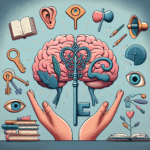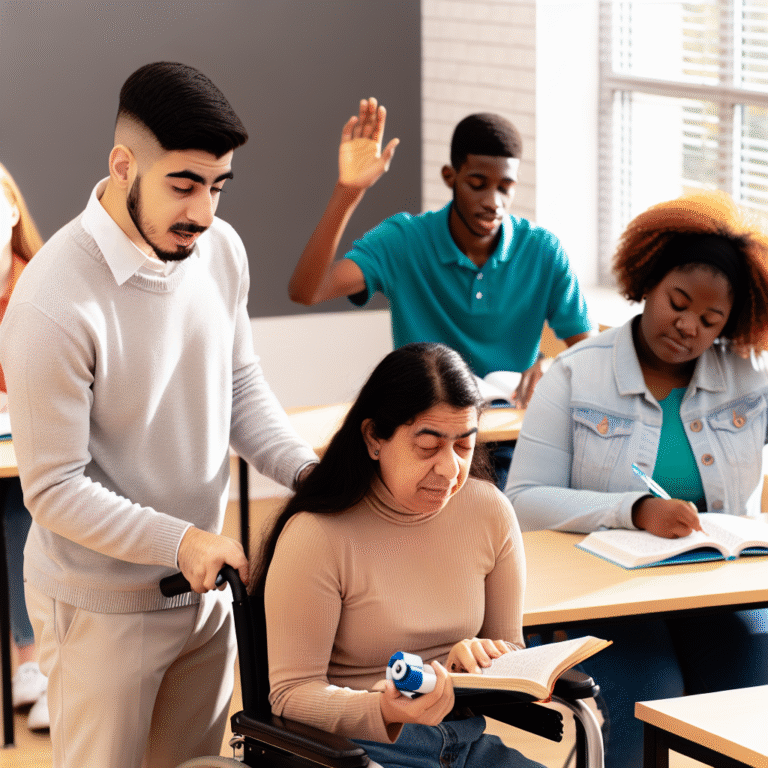
The Ultimate Art of Retention: Study Techniques Derived from Psychological Research
Introduction
In a world filled with distractions, mastering the art of retention can seem like an insurmountable challenge. Whether you’re a student aiming to ace an exam, a professional seeking to learn new skills, or anyone wishing to retain crucial information, understanding how the mind works is key. The Art of Retention: Study Techniques Derived from Psychological Research illuminates proven strategies backed by scientific studies, helping individuals not just learn but retain information effectively for the long term.
Understanding these techniques isn’t just an academic exercise; it’s a life skill. The ability to absorb, understand, and retain information can radically transform your personal and professional life, offering an edge in today’s competitive landscape. Let’s dive into the psychological principles that pave the way for effective study techniques.
The Science Behind Memory
Memory Stages: Encoding, Storage, and Retrieval
Before exploring specific study techniques, it’s essential to understand the memory process:
- Encoding: The first step where information is converted into a form that can be stored in the brain.
- Storage: The retention of encoded information over time, which can be short-term or long-term.
- Retrieval: The process of accessing the stored information when needed.
Studies suggest that effective encoding through various techniques enhances the likelihood of successful retrieval, forming the crux of The Art of Retention: Study Techniques Derived from Psychological Research.
Case Study: The Ebbinghaus Forgetting Curve
One of the foundational concepts in understanding memory is Hermann Ebbinghaus’ forgetting curve, which illustrates the decline of memory retention over time when no effort is made to retain information. This study showed that after one day, we can forget nearly 70% of newly learned information.
Relevance:
This curve underscores the importance of revisiting learning material regularly. Techniques such as spaced repetition and active recall can greatly improve retention by strategically scheduling revision times.
Effective Study Techniques
1. Spaced Repetition
Spaced repetition involves spacing out study sessions over time rather than cramming. This method leverages the spacing effect—a psychological phenomenon where information is more easily recalled when studied over spaced intervals.
Practical Application:
Using apps like Anki or Quizlet, learners can schedule periodic reviews of content, adhering to the principles outlined in The Art of Retention: Study Techniques Derived from Psychological Research.
2. Active Recall
Instead of passively reading or highlighting texts, active recall encourages learners to retrieve information from memory. This technique actively engages the learner, solidifying the information.
Case Study: UCLA Research on Active Recall
Research conducted by UCLA found that students who practiced active recall outperformed their peers by nearly 40% in retention tests. The study emphasized that retrieval practice enhances memory consolidation.
Relevance:
This case study confirms the effectiveness of active engagement with materials as a core component of The Art of Retention: Study Techniques Derived from Psychological Research.
3. Interleaved Practice
Interleaving involves mixing different topics or types of problems during study sessions. This technique has been shown to enhance learning by forcing the brain to adapt to varying contexts.
Example:
A math student might alternate between algebra, geometry, and calculus problems, which strengthens overall understanding.
4. Visualization Techniques
Visual aids such as mind maps or diagrams can significantly enhance memory retention by creating mental images associated with information.
Practical Tips:
- Use color coding for different subjects.
- Draw diagrams to visualize complex processes.
Research shows that incorporating visual elements into your study can make information more memorable.
5. Storytelling
Transforming facts into narratives can also increase retention rates, as stories are inherently easier for our brains to remember than isolated pieces of information.
Practical Application:
Creating a relatable story around historical events or scientific concepts uses narrative techniques, capitalizing on human nature’s affinity for storytelling.
The Role of Emotion in Retention
Emotional connections to information can significantly enhance retention, as emotions play a pivotal role in memory consolidation.
Case Study: The Role of Emotion in Learning
A study revealed that students who attached personal significance or emotional context to the material had a 25% better recall rate than those who didn’t.
Relevance:
This finding highlights the importance of finding personal meaning in the subjects being studied, illustrating another key aspect of The Art of Retention: Study Techniques Derived from Psychological Research.
Technology and Enhanced Learning
In the digital age, technology can complement traditional study methods. Online platforms provide innovative ways to practice and reinforce learning.
1. Educational Apps
Utilizing apps designed for learning can streamline the process of implementing various techniques discussed. Features like flashcards, quizzes, and spaced repetition algorithms facilitate effective study sessions.
2. Collaborative Learning Platforms
Websites like Khan Academy or Coursera offer community-based learning experiences where peers can engage in discussions, fostering both interpersonal connections and deeper understanding of the material.
Conclusion
Mastering The Art of Retention: Study Techniques Derived from Psychological Research is not merely an academic goal; it’s a lifelong toolkit for success. Applying these evidence-based strategies can empower you to learn more efficiently and retain information longer.
Imagine walking into your next exam, project, or presentation equipped not just with information, but with the confidence that you can share meaningful insights and solutions.
Actionable Takeaway:
Start submitting these techniques into your routine one step at a time. Experiment with spaced repetition, try active recall, implement visualization, and forge emotional connections with the material. In doing so, you embrace the profound ability to not only learn but thrive.
FAQs
1. How often should I incorporate spaced repetition into my study routine?
Aim for revisiting material every few days initially, extending the intervals as you become more familiar with the content.
2. Is active recall effective for all types of subjects?
Yes, active recall can be adapted for various disciplines, whether it be math problems, historical facts, or vocabulary.
3. What are the best methods for creating visual aids?
Consider using mind maps, infographics, or simple sketches that resonate with the material, emphasizing key concepts and relationships.
4. How can I make emotional connections to my study material?
Link the material to personal experiences or broader narratives that evoke emotion, thereby enhancing memory.
5. Are there specific apps recommended for these techniques?
Anki for spaced repetition, Quizlet for flashcards, and Trello for organizing study agendas are great options.
Incorporate these insights into your study process and witness the transformation in your retention skills, paving the way for not only academic success but lifetime learning capabilities.














